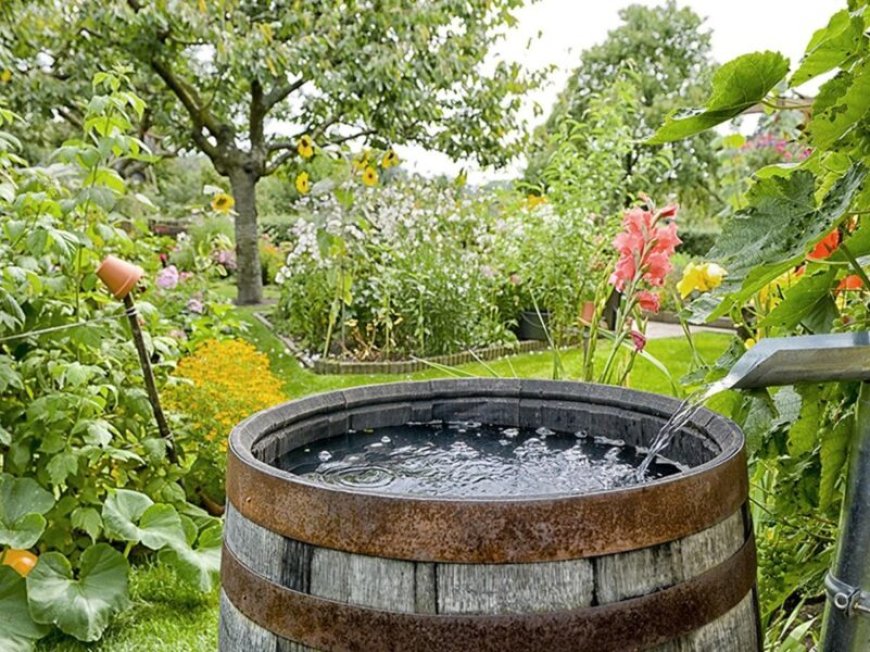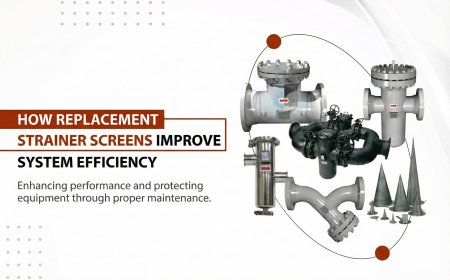Rainwater Harvesting Market Growth, Share, and Forecast 2025-2033
The global rainwater harvesting market size was valued at USD 1,608.99 Million in 2024. Looking forward, IMARC Group estimates the market to reach USD 2,313.49 Million by 2033, exhibiting a CAGR of 4.64% from 2025-2033.

Market Overview:
The rainwater harvesting market is experiencing rapid growth, driven by rising water scarcity and increasing demand for alternative sources, government regulations and incentive programs, and growing awareness about sustainable water management. According to IMARC Group's latest research publication, "Rainwater Harvesting Market Size, Share, Trends and Forecast by Harvesting Method, End-User, and Region, 2025-2033", the global rainwater harvesting market size was valuedatUSD 1,608.99 Millionin 2024. Looking forward, IMARC Group estimates the market to reachUSD 2,313.49 Millionby 2033, exhibiting aCAGR of 4.64%from 2025-2033.
This detailed analysis primarily encompasses industry size, business trends, market share, key growth factors, and regional forecasts. The report offers a comprehensive overview and integrates research findings, market assessments, and data from different sources. It also includes pivotal market dynamics like drivers and challenges, while also highlighting growth opportunities, financial insights, technological improvements, emerging trends, and innovations. Besides this, the report provides regional market evaluation, along with a competitive landscape analysis.
Download a sample PDF of this report: https://www.imarcgroup.com/rainwater-harvesting-market/requestsample
Our report includes:
- Market Dynamics
- Market Trends And Market Outlook
- Competitive Analysis
- Industry Segmentation
- Strategic Recommendations
Growth Factors in the Rainwater Harvesting Market
- Rising Water Scarcity and Increasing Demand for Alternative Sources
One of the major drivers of the rainwater harvesting system market is the growing concern of water scarcity around the world. With groundwater depleting faster than it can be replenished, and the quality and availability of freshwater coming under further pressure, governments, industries, and people at residential level are looking for alternative water sources. Rainwater harvesting allows for water education and reduced reliance on alternative water sources. Once collected, water can be reused for irrigation, people, and industrial processes. For example, a number of drought-prone locations in India and certain areas of Africa have taken to large-scale implementation of rainwater harvesting schemes to counter chronic water shortages. The need for emergency supplementary sources of rainwater is increasing.
- Government Regulations and Incentive Programs
Supportive government policies and incentive schemes are playing a crucial role in accelerating the growth of the rainwater harvesting system market. Many countries have introduced mandatory rainwater harvesting regulations for new buildings, especially in urban areas where water demand is high. In addition, financial incentives such as subsidies, tax rebates, and grants encourage homeowners and businesses to install rainwater collection systems. For instance, cities like Sydney and Melbourne in Australia have integrated rainwater harvesting into building codes, significantly increasing adoption rates. These regulatory frameworks not only promote environmental sustainability but also open up lucrative opportunities for system providers and technology innovators.
- Growing Awareness About Sustainable Water Management
Growing global awareness towards sustainability and protecting the environment is yet another important growth factor influencing the rainwater harvesting system market. With more news coverage, educational campaigns, and advocacy from environmental societies, opportunities are increasing for people and businesses to become aware of their water usage and ecological footprint. In fact, many corporate campuses, educational institutions, and residential societies are voluntarily adopting rainwater harvesting systems as a part of their goals for saving water. Rainwater harvesting systems have been adopted in the construction of green buildings and sustainable LEED certified projects, where water efficiency is a key performance criterion, as a case in point. Awareness is expected to continue to grow and spur long-term growth.
Key Trends in the Rainwater Harvesting Market
- Integration of Smart Technologies
A major development in the rainwater harvesting system market is the use of smart technologies to improve performance monitoring. These days, rainwater harvesting systems often come with Internet of Things (IoT) sensors, automated filtering systems, and cloud-based monitoring systems that permit end-users to remotely see the water's depth, quality, and usage. These developments enhance reliability and give end-users the ability to make more informed decisions about how to use water. For instance, where there are smart rainwater harvesting solutions in urban residential complexes in Singapore, the performance monitoring has improved water reuse effectiveness and reduced maintenance costs remarkably. This digital development regarding water management systems is not unique to rainwater harvesting.
- Growing Adoption in Urban Infrastructure Projects
Another notable trend is the incorporation of rainwater harvesting systems in large-scale urban infrastructure and smart city projects. With cities expanding rapidly and facing mounting water supply challenges, urban planners are prioritizing sustainable water management solutions. Rainwater harvesting is increasingly being integrated into public parks, transportation hubs, commercial complexes, and housing developments as part of a comprehensive water strategy. For instance, several cities in Europe and the Middle East have included rainwater harvesting as a mandatory feature in new urban development guidelines. This trend highlights the role of rainwater harvesting in addressing urban water stress while contributing to climate resilience.
- Customization and Modular System Designs
The rainwater harvesting system industry currently has an increasing demand for user-specific customizable modular systems. The different needs of regions, property types and climates require a one-of-a-kind approach, and manufacturers are realizing that there are users out there who want to be given a flexible system that can scale or change easily. Rainwater harvesting solutions are coming in all shapes and sizes, from a compact rooftop tank for a small home, to a large underground reservoir for an industrial setting. Most residential and small businesses will favor a rainwater harvesting solution as a flexible modular tank that can be added or removed to accommodate their future usage. This trend leads to further adoption of rainwater harvesting systems because they become accessible as well as practical for a range of applications.
Leading Companies Operating in the Global Rainwater Harvesting Industry:
- Kingspan Group
- Watts Water Technologies, Inc.
- Graf Group
- WISY AG
- Innovative Water Solutions LLC
- D&D Ecotech Services
- Rain Harvesting Supplies, Inc.
- Water Field Technologies Pvt. Ltd
- Stormsaver
- Climate Inc
- Water Harvesters
- Heritage Tanks
Rainwater Harvesting Market Report Segmentation:
By Harvesting Method:
- Above Ground
- Underground
Above-ground rainwater harvesting is the dominant method due to its simplicity, accessibility, and cost-effectiveness in collecting and storing rainwater using visible systems like rooftop setups and storage tanks.
By End-User:
- Commercial
- Residential
- Industrial
The commercial sector holds the largest share in the rainwater harvesting market due to businesses recognizing its significant potential for water savings, supporting sustainability initiatives, and aligning with corporate social responsibility goals.
Regional Insights:
- North America (United States, Canada)
- Asia Pacific (China, Japan, India, South Korea, Australia, Indonesia, Others)
- Europe (Germany, France, United Kingdom, Italy, Spain, Russia, Others)
- Latin America (Brazil, Mexico, Others)
- Middle East and Africa
North America holds the largest share in the rainwater harvesting market due to its diverse climate, increasing environmental awareness, supportive government initiatives, and the growing trend towards green building practices.
Research Methodology:
The report employs a comprehensive research methodology, combining primary and secondary data sources to validate findings. It includes market assessments, surveys, expert opinions, and data triangulation techniques to ensure accuracy and reliability.
Note: If you require specific details, data, or insights that are not currently included in the scope of this report, we are happy to accommodate your request. As part of our customization service, we will gather and provide the additional information you need, tailored to your specific requirements. Please let us know your exact needs, and we will ensure the report is updated accordingly to meet your expectations.
About Us:
IMARC Group is a global management consulting firm that helps the worlds most ambitious changemakers to create a lasting impact. The company provide a comprehensive suite of market entry and expansion services. IMARC offerings include thorough market assessment, feasibility studies, company incorporation assistance, factory setup support, regulatory approvals and licensing navigation, branding, marketing and sales strategies, competitive landscape and benchmarking analyses, pricing and cost research, and procurement research.
Contact Us:
IMARC Group
134 N 4th St. Brooklyn, NY 11249, USA
Email: sales@imarcgroup.com
Tel No:(D) +91 120 433 0800
United States: +1-631-791-1145

































